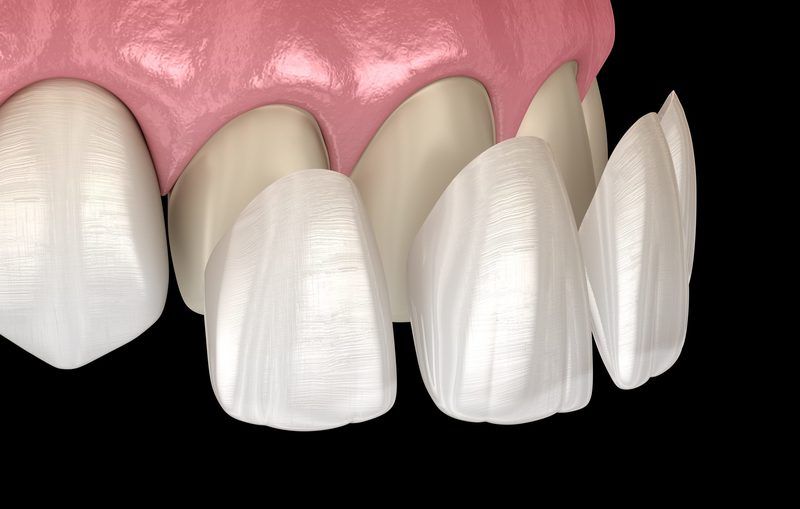
Are you curious about how to say dental veneers in Spanish? Well, you’re in luck because we are here to shed some light on this intriguing question! Dental veneers, those thin shells that are placed on the front surface of your teeth to improve their appearance, have become quite popular in recent years. But how do you ask for them in Spanish? Let’s dive in and find out!
Now that you know how to say dental veneers in Spanish, you can confidently communicate with your Spanish-speaking dentist or friends about this popular dental treatment. Remember, “carillas dentales” is the phrase you need to remember. So go ahead and flaunt your newfound knowledge with a smile, or should I say, una sonrisa!

How Do You Say Dental Veneers in Spanish?
Dental veneers, also known as “carillas dentales” in Spanish, are a popular cosmetic dental treatment used to improve the appearance of teeth. These thin shells made of porcelain or composite resin are bonded to the front surface of teeth to enhance their shape, color, and overall aesthetics. If you’re considering getting dental veneers in a Spanish-speaking country or communicating with a Spanish-speaking dentist about this procedure, it’s essential to know how to say dental veneers in Spanish. In this article, we will explore the translation and provide you with some useful information about dental veneers.
What Are Dental Veneers?
Dental veneers, or carillas dentales, are custom-made shells that are designed to cover the front surface of teeth. They are typically made of porcelain or composite resin and are bonded to the tooth using a dental adhesive. Veneers can be used to address a variety of cosmetic dental concerns, including:
1. Discolored Teeth: Dental veneers can cover stains and discoloration that cannot be effectively treated with teeth whitening procedures.
2. Chipped or Cracked Teeth: Veneers can restore the appearance of teeth that have been chipped or cracked, improving their shape and symmetry.
3. Uneven or Misaligned Teeth: Veneers can create a more uniform appearance by covering teeth that are uneven or slightly misaligned.
4. Gaps between Teeth: Veneers can close gaps between teeth, giving the smile a more cohesive and balanced look.
The Process of Getting Dental Veneers
If you’re considering getting dental veneers, it’s important to understand the process involved. Here’s a step-by-step overview of what you can expect:
1. Consultation: The first step is to schedule a consultation with a dentist who specializes in cosmetic dentistry. During this appointment, you can discuss your goals and expectations for the treatment.
2. Preparation: To prepare the teeth for veneers, a small amount of enamel may need to be removed from the front surface of the tooth. This helps create space for the veneer and ensures a proper fit.
3. Impressions: After the teeth are prepared, impressions of your teeth will be taken. These impressions will be used to create custom-made veneers that match the shape and color of your natural teeth.
4. Temporary Veneers: While your permanent veneers are being created, temporary veneers may be placed to protect your teeth and maintain your smile’s appearance.
5. Bonding: Once your permanent veneers are ready, they will be bonded to the front surface of your teeth using a dental adhesive. The dentist will ensure that the veneers fit properly and make any necessary adjustments.
6. Follow-up Appointment: After the veneers are bonded, a follow-up appointment will be scheduled to evaluate the results and make any necessary adjustments.
How to Say Dental Veneers in Spanish?
Knowing how to say dental veneers in Spanish can be helpful when communicating with Spanish-speaking dentists or seeking dental treatment in a Spanish-speaking country. The translation for dental veneers in Spanish is “carillas dentales.” This term is commonly used across Spanish-speaking countries and is the most recognized way to refer to dental veneers.
When discussing dental veneers with a Spanish-speaking dentist, you can use the phrase “carillas dentales” to ensure clear communication. It’s important to note that dental terminology may vary slightly between different Spanish-speaking regions, but “carillas dentales” is widely understood and accepted.
Benefits of Dental Veneers
Dental veneers offer several benefits that make them a popular choice for individuals seeking to enhance their smiles. Some of the key advantages of dental veneers include:
1. Improved Appearance: Veneers can dramatically improve the color, shape, and overall appearance of teeth, giving you a more confident smile.
2. Long-lasting Results: With proper care, dental veneers can last for many years, providing long-lasting results.
3. Stain Resistance: Porcelain veneers are highly resistant to stains, allowing you to enjoy a bright, white smile.
4. Minimally Invasive: The process of getting dental veneers is minimally invasive compared to other cosmetic dental procedures.
5. Versatility: Dental veneers can address a wide range of cosmetic dental concerns, making them a versatile treatment option.
In conclusion, dental veneers, or “carillas dentales,” are a cosmetic dental treatment used to enhance the appearance of teeth. If you’re looking to communicate about dental veneers in Spanish, knowing the translation “carillas dentales” is essential. These thin shells can address various cosmetic dental concerns and provide long-lasting results. Consult with a qualified dentist to determine if dental veneers are the right option for you and achieve the smile you’ve always wanted.
How Do You Say Dental Veneers in Spanish?
In Spanish, dental veneers are called “carillas dentales”.
- Carillas dentales is the Spanish term for dental veneers.
- When talking about dental veneers in Spanish, you can use the phrase “carillas de porcelana” which means porcelain veneers.
- In Mexico, dental veneers are referred to as “carillas dentales” as well.
- Carillas de resina is another way to say dental veneers in Spanish, specifically referring to resin veneers.
- It’s important to note that the pronunciation of “carillas dentales” in Spanish is kah-ree-yas den-tah-les.
Frequently Asked Questions
Dental veneers are a popular cosmetic dental treatment that can help enhance the appearance of your teeth. If you’re wondering how to say dental veneers in Spanish, here are some commonly asked questions and their answers.
1. What are dental veneers?
Dental veneers, or “carillas dentales” in Spanish, are thin shells made of porcelain or composite resin that are bonded to the front surface of your teeth. They are custom-made to match the color and shape of your natural teeth, and can be used to correct various dental imperfections such as discoloration, chips, cracks, or gaps.
Veneers are a minimally invasive treatment that can dramatically improve the aesthetics of your smile. They are a popular choice for individuals who want to achieve a more symmetrical and uniform appearance of their teeth.
2. How do you say dental veneers in Spanish?
To say dental veneers in Spanish, you would use the term “carillas dentales.” This is the commonly used term in Spanish-speaking countries to refer to this cosmetic dental treatment. If you are visiting a Spanish-speaking dentist or discussing veneers with a Spanish-speaking individual, using this term will help ensure effective communication.
3. Are dental veneers a permanent solution?
Dental veneers are considered a long-term solution for improving the appearance of your teeth, but they are not necessarily permanent. With proper care and maintenance, veneers can last for many years. However, they may need to be replaced over time due to normal wear and tear or if they become damaged.
It’s important to maintain good oral hygiene practices, such as regular brushing and flossing, to prolong the lifespan of your veneers. Additionally, avoiding habits that can put excessive stress on your teeth, such as biting on hard objects or using your teeth as tools, can help prevent damage to your veneers.
4. Are dental veneers reversible?
The process of getting dental veneers involves removing a small amount of enamel from the front surface of your teeth to create space for the veneers. This means that the procedure is not reversible, as the enamel cannot be replaced once it’s removed.
Before getting veneers, it’s important to have a thorough consultation with your dentist to discuss your goals and expectations. Your dentist will be able to evaluate whether veneers are the right option for you and provide you with all the necessary information to make an informed decision.
5. How much do dental veneers cost?
The cost of dental veneers can vary depending on several factors, including the material used, the number of veneers needed, and the location of the dental practice. On average, dental veneers can range from $500 to $2,500 per tooth.
It’s important to consult with your dentist to get an accurate cost estimate based on your specific needs. They will be able to provide you with a detailed treatment plan and discuss any financing options that may be available to help make veneers more affordable for you.
Porcelain veneers. This is how we do it
Final Thought: How Do You Say Dental Veneers in Spanish?
So there you have it, my friend! You’ve learned how to say “dental veneers” in Spanish. Now you can confidently communicate with Spanish-speaking individuals when discussing dental treatments. Whether you’re a dentist, a dental student, or simply curious about expanding your language skills, knowing how to say “dental veneers” in Spanish is a valuable asset.
Language learning is a lifelong journey that brings people together and allows us to connect on a deeper level. So, go ahead and impress your friends with your newfound knowledge of how to say “dental veneers” in Spanish! ¡Buena suerte!
Call or Book appointment online
:Ace Dental Care Alpharetta office: 678-562-1555 - Book Now
Ace Dental Care Norcross office: 770-806-1255 - Book Now
Disclaimer
This blog post was generated by artificial intelligence. The content of this post may not be accurate or complete, and should not be relied upon as a substitute for professional advice. If you have any questions about the content of this post, please contact us.
We are constantly working to improve the accuracy and quality of our AI-generated content. However, there may still be errors or inaccuracies. We apologize for any inconvenience this may cause.





